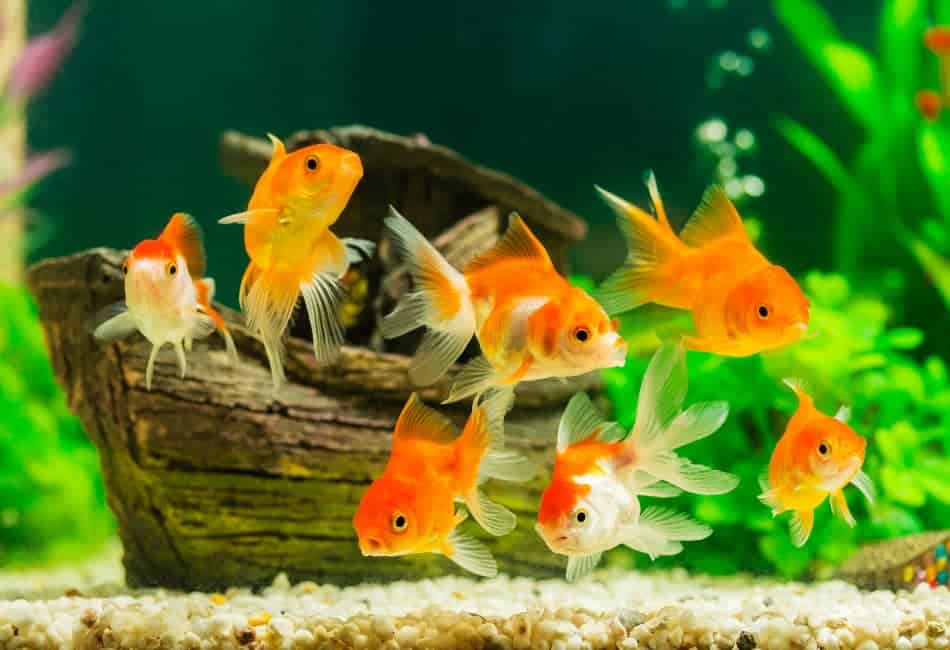Marble is a beautiful stone that can be used for many different purposes, but are they safe to use in an aquarium? This article will discuss whether or not marble is the right choice for your aquarium.
So is marble stone safe for aquariums? Below are the pros and cons of using marble in your aquariums.
| The Pros | The Cons |
| Marbles Are Great For Breeding Aquarium Tanks | Marble Can Alter The Ph Level In Your Aquarium |
| Marbles Used For Aquariums Are Easy To Clean | Marble Can Gradually Raise The Hardness Of The Water In The Aquarium |
| Marble Are Hard And Difficult To Breakdown In An Aquarium | Marble May Cause Algae Buildup In The Fish Tank |
To learn the details on the pros and cons of using marble in your aquariums, keep reading this article so you can make a better decision.
The Pros Of Using Marble In Aquariums
1. Marbles Are Great For Breeding Aquarium Tanks
The main advantage of using marble in an aquarium is that it provides a conducive space for the fishes in your tank to lay their eggs.
The natural spaces in-between the marble are great breeding grounds where the fish can hide its eggs so other fishes cannot reach them.
It also provides a natural environment for the fish. The stone will also reduce light, making it less stressful for the fish and plants.
In addition, marble can help absorb some noise in your tank as well as any heat from lights or filters that might be placed over the top of them.
Finally, if you have an area where water needs to drain off into another container below then marbles make perfect sense!
They create a little waterfall effect that looks aesthetically pleasing and isn’t too loud – unlike slate stones! This is especially helpful when trying to breed guppies since the males need more room than females do at times.
2. Marbles Used For Aquariums Are Easy To Clean
Marbles can be easily cleaned by using a clean product from Amazon, so it doesn’t matter if they are stained or dirty. This is because of the smooth surface of the marble.
Due to this, there is no need for the marble to be scrubbed. They are particularly easy to clean when the aquarium is empty.
All you need to do is vacuum them off the bottom of your tank and rinse them in a solution like baking soda water. You can also use warm water to adequately clean your marble to remove any bacteria hiding on them.
It is a good idea to rinse off the marble every week in order to prevent algae growth.
3. Marble Are Hard And Difficult To Breakdown In An Aquarium
Marbles are often a great choice for aquariums because they are harder than what you would find in an aquarium.
Meaning it may not break down easily and in many cases, it will suck up all the nutrients meant for algae growth on the surface of your tank.
This property also makes marble perfect as a decorative item only because it cannot be easily broken down when placed inside an aquarium.
Bonus Benefits
# Marbles Are Inexpensive
Marbles are typically inexpensive and easy to find, so it will be no trouble at all if you need more of them or want replacements.
Marble stones can make aquariums look very elegant and expensive compared to glass tanks that often break much easier than marbles do. This makes an average person feel like they can take care of their tank with ease because there aren’t as many things that could go wrong while using these types of stones.
It also looks cleaner without any debris floating around on the surface when looking through an acrylic stone for fish viewing purposes which is one reason why people buy them in the first place.
# Marbles Adds Beauty To The Aquarium
Another benefit of using marble in your aquarium is that they make your aquarium look very beautiful due to their natural colors. There are many different types of marble stones and each one has a varying degree of color on them.
This is true because these stones are made of real marble which is a natural product and not artificial.
There was one study that found out how beautiful the aquariums with these types of rocks were compared to those without them, but all it really takes is for you to look at an example picture online in order to see what I mean.
The best part about using this type of stone in your tank is that you will absolutely love picking which color(s) of marble would work best with your home décor scheme while still fitting into the theme and style of your living area.
The Cons Of Using Marble In Aquariums
Here are a few tips if you want to go ahead and make do with marbles in your aquarium.
1. Marble Can Alter The Ph Level In Your Aquarium
Marble is not a good idea for aquariums because it can alter the pH levels of the water in your aquarium and make it unsafe for the fish in it.
This happens because marble is a metamorphic stone made up mostly of crystallized calcium carbonate (limestone) which will slowly dissolve into carbonate ions, which are then released to the surrounding environment (the water).
One of the best ways to prevent this type of situation is by first testing the pH level of the water in the aquarium and then placing the marble in the water and then testing the pH level of the water again the next day to see if the pH level of the water changed.
In most cases, the pH level may remain the same with some marble while in other cases, the pH level will change to be a lot more alkaline which can be unsafe for some freshwater fishes.
So if your fish prefers soft acid water to neutral water, then you need to avoid using marble unless those marbles have been epoxy-sealed and treated.
2. Marble Can Gradually Raise The Hardness Of The Water In The Aquarium
Marble stones can gradually raise the hardness of the water in an aquarium. If you live near natural hot springs, it may be possible that these marble stones come from this type of environment and contain minerals like calcium or magnesium which will slowly dissolve into the water making it more alkaline as time goes on.
The increased pH level does not mean that there are dangerous levels of CO² being dissolved but rather just means that the PH level is becoming higher than what was originally tested for by itself.
This gradual increase in acidity could potentially lead to some fresh-water fish dying if they were placed in such waters without warning beforehand.
This is due to them not tolerating high levels of carbon dioxide well whereas others would do just fine with much more acidity than what is seen in normal water.
The only way to know for sure if the PH level will become too high from dissolving minerals over time would be by testing it regularly and comparing those results with a carbonate hardness (KH) test.
A KH test usually measures how much bicarbonates or carbonates are dissolved into the water as well as any other alkaline components present, but not the pH of the water itself.
It can be used alongside both fresh water tanks and saltwater aquariums alike to see what levels of CO² they support at their current state before adding more fish that require different conditions.
3. Marble May Cause Algae Buildup In The Fish Tank
Using marble in an aquarium can also be linked to the buildup of algae. This is because marble is harder than what’s usually in an aquarium, so it has a tendency to suck up the nutrients that are meant for algae.
Algae formed from marble used in an aquarium can be very difficult to remove from an aquarium glass surface. If you aren’t too worried about getting rid of algae on your marble stones then by all means go ahead with this decision.
Or if you have heavy-feeding fish like goldfish or cichlids then using marble in your aquarium might be okay.
Tips On Using Marble In Your Aquarium
- Avoid using marble with fishes who are heavy feeders.
- When removing algae from a glass surface made out of marble, be careful to only use non-abrasive materials like vinegar or rubbing alcohol, and remember to rinse them thoroughly before placing them back into your aquarium.
- Make sure there are no residues like glue, polish, or grout on the marble you will be putting in your aquarium.
- Keep in mind that marble is not meant to be submerged or used as a substrate.
- Marble stones are capable of corroding when they come into contact with water, so make sure they are treated appropriately before adding them to the aquarium.
Final Thoughts
Although the number of main pros and cons of using marble in an aquarium seems to be the same, the cons far outweigh the pros. So it’s safest to use stones that are specially meant for aquariums like Granite, Quartz, Slate, Lava rock, etc, other than marble if you want your aquarium to stay safe and healthy for as long as possible.
If you do decide to go ahead anyway then take caution with fish who are heavy feeders like goldfish or cichlids and keep in mind that marbles may need more care than most substrates because of how fragile they can be! If this article has helped you, please share 🙂 Thanks for reading ♥♥♥

